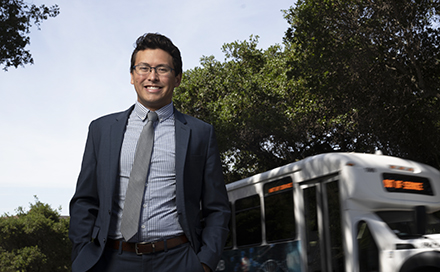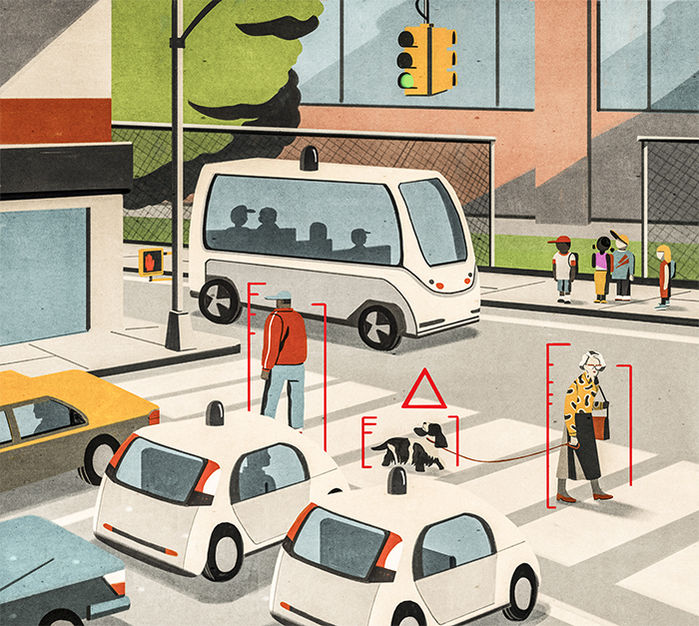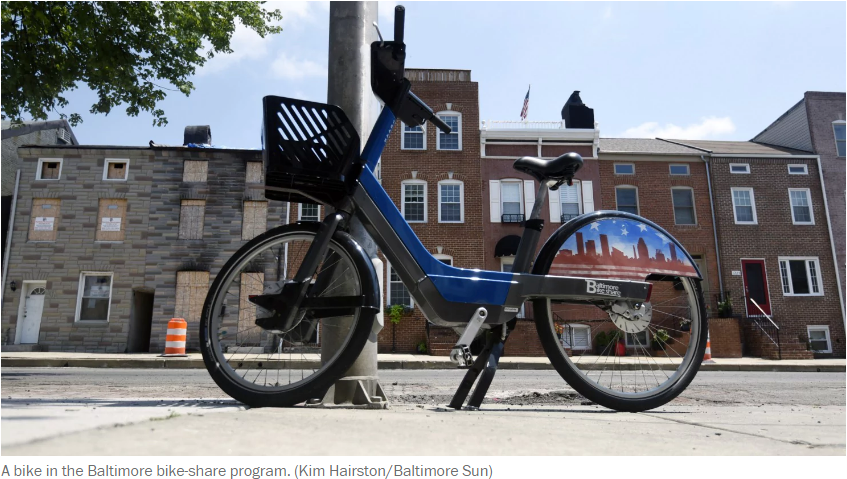
by Innovative Mobility Research | Aug 21, 2019 |
Jonathan Littman August 20, 2019 Level 1 is where you start. The higher echelons of control come only with obsession. You jack in for 45 minutes on your lunch hour. Afternoon coffee break. At night when your spouse imagines you’re cranking away on that office project. They have no idea. But when your fingers brush the keys, out there on the very real streets of Los Angeles, traffic shifts and undulates, like rainwater cutting a path. Homeowners wake up to find themselves trapped in a pop-up freeway hell that makes it nearly impossible to exit their driveways. The transportation officials and the council members and the whining neighborhood associations are mere spectators. The gamers won. The algorithm is God. Technology has spoken, and you know your supporting role. The unheralded superhero in this movie, giving every Angeleno the power to take back the streets. Los Angeles went wild over Waze when it first hit the city in 2011. It was the brash counterpart to the Google and Apple traffic apps that took a more conservative tack to turn-by-turn directions, generally providing two or three traditional highway and thoroughfare routes. Not Waze. One definitive route. The wormhole, the ultimate shortcut, the secret trick to avoid getting screwed on the 405 or the 110. In September 2014 this magazine published “The Surprising Wisdom of Waze,” an ode to what seemed algorithmic serendipity, with honeyed lines like, “To me, Waze is the Voice of God.” Why the adulation? Waze grabbed you—the harried, downtrodden L.A. commuter—with the subjective, hard-to-counter feeling that this crazy route over hill and dale just had to be...

by Innovative Mobility Research | Jun 20, 2019 |
Linda Vu June 19, 2019 In the past few years, devastating California wildfires have forced more than half a million people to evacuate their homes. In many cases, local government agencies did not have enough resources to transport and shelter all of the evacuees, especially vulnerable populations like the elderly and disabled. Meanwhile those who could afford it, secured hotel rooms or Airbnbs and evacuated with their cars. Now, researchers at UC Berkeley are suggesting that emergency management agencies and local relief organizations partner with companies in the sharing economy — including Airbnb, Lyft and Uber — and private citizens, to ensure equity in evacuations. They described their ideas in a first-of-its-kind policy brief published today. “Private sharing economy companies have already acted in California disasters and I’ve found that private citizens are moderately willing to share their own resources in disaster relief situations, especially transportation,” said Stephen Wong, a transportation engineering Ph.D. candidate in UC Berkeley’s Transportation Sustainability Research Center. “Local organizations and emergency response agencies should… Read the full article here: How can companies like Airbnb, Lyft or Uber help in...

by Innovative Mobility Research | May 9, 2019 |
Susan Shaheen May 8, 2019 Book Review In Parking and the City, urban planning Professor Donald Shoup of the University of California, Los Angeles makes a persuasive case that an oversupply of free parking, off-street parking minimums, and other policies contribute to increased congestion and higher housing costs. Shoup makes the economic case that these policies both subsidize and conceal the true costs of driving and contribute to inequity and suboptimal transportation outcomes. Parking and the City reminds policymakers, practitioners, and the public that parking has a cost. Free parking distorts travel behaviour and economic decisions, penalizes sustainable choices, and contributes to lower wages (by redirecting wage income into parking). Because the true costs of parking are concealed, travellers have an incentive to drive and thereby contribute to congestion and emissions. Shoup makes a compelling argument to allow pricing and the market economy to commodify parking based on price, location, and convenience compared to other modes. In addition to an over abundance of parking, Parking and the City argues that parking minimums result in a number of additional externalities on housing affordability, historic preservation, the environment, walkability, and local tax revenue. This edited volume…. Read the full book review here:...

by Innovative Mobility Research | Jan 4, 2018 |
Dec. 14, 2017 By: JEFFREY MERVIS The automakers and high-tech companies spending billions of dollars on developing self-driving cars and trucks tout the idea that autonomous vehicles (AVs) will help create a safer, cleaner, and more mobile society. Politicians aren’t far behind in their enthusiasm for the new technology. “This is probably the biggest thing to hit the auto industry since the first car came off the assembly line,” Senator Gary Peters (D–MI) told a cheering audience of researchers and executives at a recent computing conference in Washington, D.C. “It will not only completely revolutionize the way we get around, but [AVs] also have the potential to save hundreds of thousands of lives each year.” Such predictions, however, turn out to be based on surprisingly little research. While developers amass data on the sensors and algorithms that allow cars to drive themselves, research on the social, economic, and environmental effects of AVs is sparse. Truly autonomous driving is still decades away, according to most transportation experts. And because it’s hard to study something that doesn’t yet exist, the void has been filled by speculation—and starkly contrasting visions of the future. “The current conversation … falls into what I call the utopian and dystopian views,” says Susan Shaheen, co-director of the Transportation Sustainability Research Center at the University of California (UC), Berkeley. In the utopian view, she says, fleets of cheap, accessible AVs offer rides at the tap of a screen. Their ubiquity expands transportation options for everyone. Once AVs are commonplace, traffic accidents become a thing of the past, and enlightened government regulatory policies result in fewer traffic jams...

by Innovative Mobility Research | Oct 6, 2017 |
By Luz Lazo October 4 Last fall, then-Mayor Stephanie Rawlings-Blake touted Baltimore’s new bike-rental system as a sign of the city’s progress. “Our bike-share program will provide citizens with convenient and on-demand access to bikes for short-distance trips throughout the city,” she had said. “This is going to be great.” By summer, most of the 25 bike stations scattered around the city’s downtown and tourist areas were empty. Many of the 230 bikes were unaccounted for. Others had been found badly battered. About 100 bikes were in the shop on a given day in August, so many that keeping up with repairs was impossible. So the city chose to shut down the program, work on a solution, and possibly start over. To read the rest of the article, visit: ...






